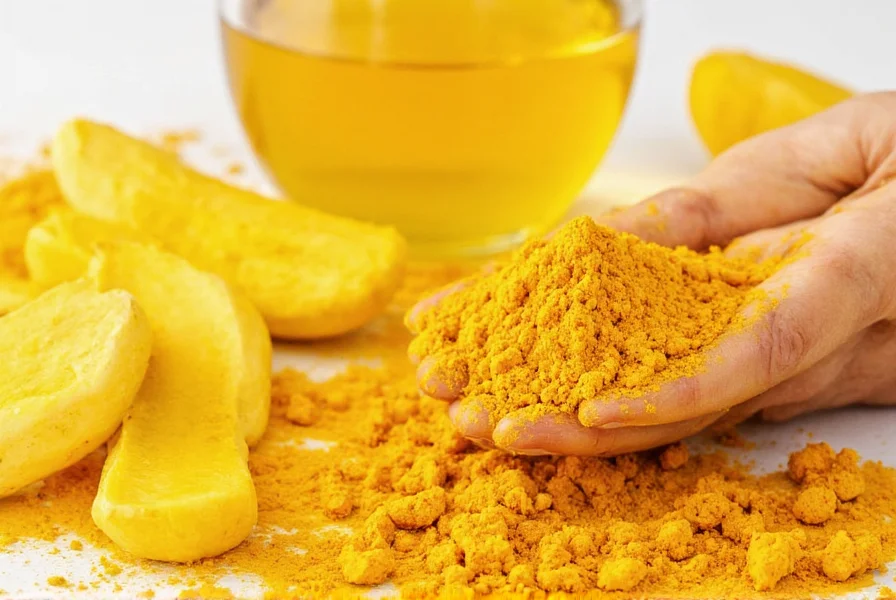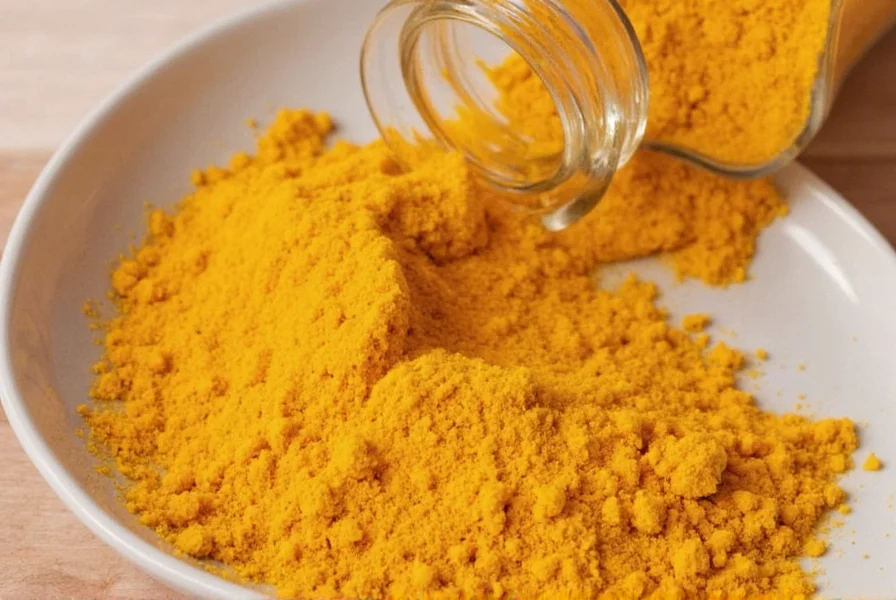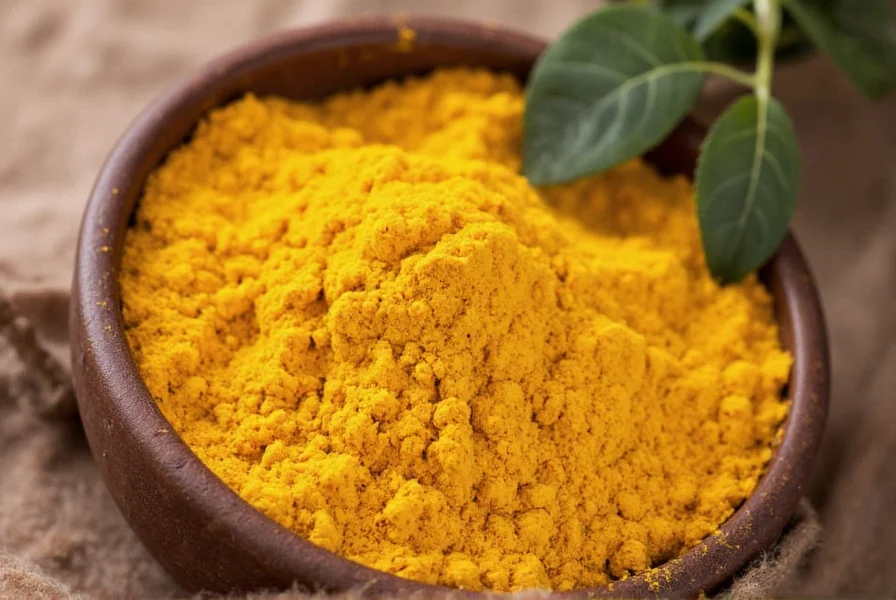Understanding the relationship between turmeric and oil is essential for maximizing the health benefits of this ancient spice. Curcumin, turmeric's primary active compound, has notoriously poor bioavailability when consumed alone. Research shows that pairing turmeric with healthy fats transforms how your body processes and utilizes these beneficial compounds.
The Science Behind Turmeric and Oil Absorption
Curcumin, the main bioactive compound in turmeric, is hydrophobic—meaning it doesn't dissolve well in water but readily dissolves in fats and oils. When consumed without fat, curcumin passes through the digestive system largely unabsorbed. The presence of dietary fats triggers bile production, which emulsifies fats and creates micelles that transport fat-soluble compounds like curcumin across the intestinal wall.
A landmark study published in Planta Medica demonstrated that consuming curcumin with just 20mg of black pepper extract (piperine) increased bioavailability by 2,000%. While black pepper is effective, healthy oils provide an even more practical and versatile absorption solution for everyday use.
| Oil Type | Absorption Boost | Additional Benefits |
|---|---|---|
| Coconut oil | Up to 1,500% | Medium-chain triglycerides support metabolism |
| Olive oil | Up to 1,200% | Rich in heart-healthy monounsaturated fats |
| Avocado oil | Up to 1,300% | High smoke point for cooking applications |
| Black pepper oil | Up to 2,000% | Piperine enhances absorption further |
Optimal Oil-to-Turmeric Ratios for Maximum Benefit
Research indicates that a minimum 3:1 oil-to-turmeric ratio by volume provides significant absorption benefits. For practical daily use:
- For 1 teaspoon of turmeric powder: Use 1 tablespoon of oil
- For golden milk: Add 1-2 tablespoons of coconut oil to your recipe
- For cooking: Always sauté turmeric in oil before adding other ingredients
The "golden rule" of turmeric consumption is simple: never take turmeric on an empty stomach or without fat. This principle applies whether you're using turmeric in cooking, making teas, or taking supplements.

Scientific Evidence Supporting the Turmeric-Oil Combination
Multiple studies confirm the dramatic impact of fats on curcumin absorption. A 2018 review in Nutrients analyzed 12 clinical trials and found that formulations containing lipids increased curcumin bioavailability by 10-20 times compared to plain curcumin powder.
The mechanism is well-established: dietary fats stimulate bile secretion, which creates micelles that transport curcumin through the intestinal wall. Without this fat-triggered process, curcumin remains largely unabsorbed and passes through the digestive system.
Research from the University of Michigan demonstrated that curcumin dissolved in oil maintained therapeutic blood levels for up to 8 hours, while plain curcumin showed negligible blood concentrations. This explains why traditional Ayurvedic and Chinese medicine preparations always combine turmeric with fats.
Practical Applications for Daily Use
Incorporating the turmeric-oil principle into your daily routine is straightforward:
- Cooking method: Always sauté turmeric in oil for 3-5 minutes before adding other ingredients. This "blooming" process activates the compounds.
- Golden milk: Combine 1 tsp turmeric, 1 tbsp coconut oil, and warm milk (dairy or plant-based) for an absorption-optimized beverage.
- Topical application: For skin benefits, mix turmeric with coconut or olive oil for anti-inflammatory facial treatments.
- Supplement enhancement: Take turmeric supplements with a meal containing healthy fats for maximum absorption.

Safety Considerations and Limitations
While the turmeric-oil combination is generally safe, certain considerations apply:
- High doses of turmeric (over 8 grams daily) may cause digestive discomfort
- People on blood-thinning medications should consult their doctor before regular turmeric use
- The absorption boost doesn't eliminate curcumin's natural metabolic breakdown
- Quality matters—choose organic turmeric and cold-pressed oils for best results
It's important to note that while oil dramatically improves absorption, it doesn't change turmeric's fundamental properties. The anti-inflammatory and antioxidant benefits remain the same—your body just accesses more of them.
Conclusion: Maximizing Turmeric's Potential
The turmeric and oil relationship represents a perfect marriage of traditional wisdom and modern science. By understanding and applying this simple principle, you can transform how your body utilizes turmeric's powerful compounds. Whether you're using turmeric for general wellness, inflammation support, or specific health goals, incorporating healthy fats ensures you receive the maximum possible benefit from each serving.
Remember that consistency matters more than perfection—regular consumption of properly prepared turmeric delivers cumulative benefits over time. Start with small, oil-enhanced doses and gradually increase as your body adjusts to this powerful natural compound.
How much oil should I use with turmeric for optimal absorption?
For optimal absorption, use a 3:1 ratio of oil to turmeric by volume. This means for every teaspoon of turmeric powder, add one tablespoon of healthy oil like coconut or olive oil. This ratio provides sufficient fat to trigger bile production and create the micelles needed for proper curcumin absorption.
Which oil works best with turmeric for health benefits?
Coconut oil provides the highest absorption boost (up to 1,500%) due to its medium-chain triglycerides. Olive oil and avocado oil are excellent alternatives with absorption boosts around 1,200-1,300%. Black pepper oil offers the highest enhancement (up to 2,000%) because it contains piperine, which further inhibits curcumin metabolism.
Can I use turmeric oil topically for skin benefits?
Yes, turmeric oil can be applied topically for skin benefits. Mix 1/4 teaspoon of turmeric with 1 tablespoon of coconut or olive oil, apply to clean skin, and leave for 15-20 minutes before rinsing. This combination leverages turmeric's anti-inflammatory properties while the oil helps the compounds penetrate the skin barrier. Always do a patch test first as turmeric can temporarily stain light skin.
How long should I cook turmeric with oil to maximize benefits?
Sauté turmeric in oil for 3-5 minutes before adding other ingredients. This "blooming" process activates the compounds and allows them to properly dissolve in the fat. Research shows that heating turmeric in oil for this duration increases curcumin solubility without degrading the beneficial compounds. Avoid prolonged high-heat cooking which can reduce potency.
Does the turmeric and oil combination help with inflammation?
Yes, the turmeric and oil combination significantly enhances turmeric's anti-inflammatory effects. When curcumin is properly absorbed thanks to the oil, it can effectively inhibit inflammatory pathways in the body. Studies show that the oil-enhanced form of curcumin reduces inflammatory markers like CRP and IL-6 more effectively than plain turmeric, making it particularly beneficial for conditions like arthritis and other inflammatory disorders.











 浙公网安备
33010002000092号
浙公网安备
33010002000092号 浙B2-20120091-4
浙B2-20120091-4